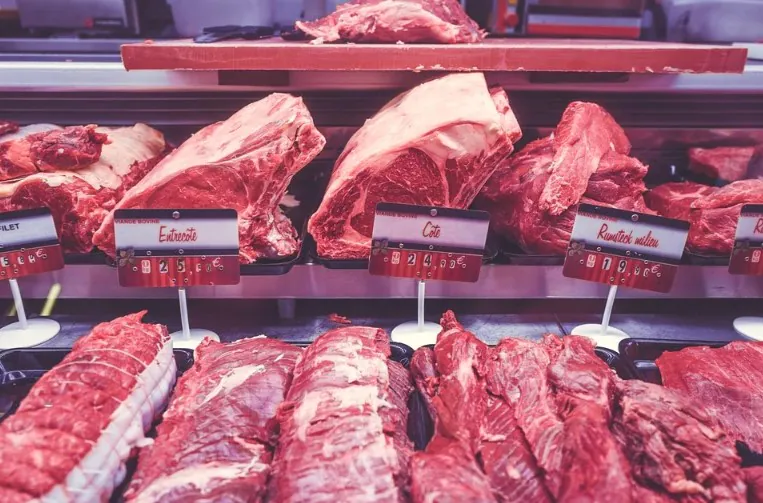The global beef industry is on a strong and steady growth over the recent decades, as those top beef producing countries, largest beef exporters and importers continue to expend their businesses in the global market. Beef, as one of the most important products in the global livestock market, is often acknowledged as a premium source of protein in human diets, therefore is widely consumed in the majority of countries around the world. With the global population expected to total 9 billion by 2050, the demand for beef is projected to have rapid increase over the next few decades, driving the earnings for world’s top beef producing countries and largest beef exporters to the next level.
Bizvibe’s smart B2B marketplace solutions help buyers and suppliers in the global beef industry and cattle industry to connect with each other, shorten sourcing and purchasing cycles, and maximise the profit growth. Join today to see how 91��Ƭ�� can help you!
Global Beef Industry Overview
According to the recent market report published on the Global Trade Magazine, the global beef market revenue amounted to $385.7 billion in 2018, growing by 5.1% against the previous year. This figure reflects the total revenues of producers and importers in the market. The market value increased at an average annual rate of +3.2% over the period from 2007 to 2018. The most prominent rate of growth was recorded in 2008 with an increase of 11% year-to-year. Meanwhile the global beef consumption peaked in 2018, when the whole world consumed 60.9 million metric tons of beef, and it is expected to retain its growth in the near future.
The global beef production reached about 70 million tonnes in 2018, maintaining the similar level from the previous year. The pace of beef production growth appeared the most rapid in 2013 when Production Volume increased by 1.8% against the previous year. Over the past decade, global beef production reached its peak figure volume in 2018 and is likely to continue its growth in the immediate term. The general positive trend in terms of beef output was largely conditioned by a relatively flat trend pattern of the number of producing animals and a relatively flat trend pattern in yield figures.
In 2019, as forecast by the USDA, the global beef production was likely to reach 62.6 million tons, primarily from gains in Brazil, the United States, and China. China’s expansion is driven largely by growing demand for beef and other meats as pork production will be hindered by disease issues. Growing beef demand in China and Hong Kong, together with higher domestic demand, will spur higher production in Brazil. Gains by Mexico and India are driven by improved export opportunities. Australia will continue to see declines in production because of widespread drought in two major cattle-producing states. Similarly, dry weather conditions are expected to affect EU production.
When it comes to value, the global beef industry is worth about $392.3 billion in 2018 estimated in export prices. The total output value increased at an average annual rate of +4.3% over the period from 2007 to 2018. Again, the growth pace was the most rapid in 2008 with an increase of 19% y-o-y. Global beef production peaked in 2018 and is likely to see steady growth in the immediate term.
Top Beef Producing Countries in 2019
| Rank | Country | Producing Volume (1000 tonnes) |
| 1 | US | 12,381 |
| 2 | Brazil | 10,225 |
| 3 | China | 6,850 |
| 4 | India | 4,287 |
| 5 | Argentina | 3,120 |
| 6 | Australia | 2,450 |
| 7 | Mexico | 2,020 |
| 8 | Pakistan | 1,820 |
| 9 | Russia | 1,367 |
| 10 | Canada | 1,350 |
| 11 | South Africa | 980 |
| 12 | New Zealand | 686 |
| 13 | Colombia | 625 |
| 14 | Uruguay | 568 |
| 15 | Paraguay | 530 |
| 16 | Iran | 500 |
| 17 | Kazakhstan | 480 |
| 18 | Japan | 470 |
| 19 | Egypt | 373 |
| 20 | Ukraine | 345 |
Source: USDA
The United States is the world’s largest beef producer, primarily high-quality, grain-fed beef for domestic and export use. The US also has the largest fed-cattle industry in the world. Nevertheless, the United States is a net beef importer, purchasing lower-value, grass-fed beef destined for processing, according the USDA. The US beef industry is roughly divided into two production sectors: cow-calf operations and cattle feeding. Because the cattle/beef industry depends on feed grains, grain supplies and prices affect beef production. The average American consumer eats approximately 58 pounds of beef per year, as of 2018. This figure is expected to remain constant at around 58 pounds for the next several years.
Brazil is the world’s second largest beef producer and top beef exporter. Brazil has the world’s second-largest cattle herd—232 million head—and its production is largely based on grass. Increased beef demand worldwide has stimulated increased production and productivity gains. In 2019, Brazil reached its highest level of beef production. According to the report by USDA, programs that subsidize and improve pastures and crossbreeding are primary drivers of the overall increase of cattle production in 2019, growing the Brazilian cattle herd by 56% from 1990.
China ranks as third largest beef producing country in the world behind the U.S. and Brazil. In 2019 Chinese beef production was estimated at about 6.8 million metric tons. China has an estimated total cattle herd of 96.85 million head in 2018. The beef production in China consists of an assortment of native beef breeds, known collectively as Yellow cattle. The Chinese beef industry also includes yak production on the high Tibet plateau in the southwest and water buffalo production in the south and southeast.
Top Beef Exporting Countries
| Rank | Country | 2018 Export Volume (1000 tonnes) |
| 1 | Brazil | 2,025 |
| 2 | India | 1,900 |
| 3 | Australia | 1,610 |
| 4 | United States | 1,372 |
| 5 | New Zealand | 560 |
| 6 | Canada | 480 |
| 7 | Uruguay | 420 |
| 8 | Paraguay | 400 |
| 9 | EU | 370 |
| 10 | Argentina | 350 |
| 11 | Mexico | 305 |
| 12 | Belarus | 215 |
| 13 | Nicaragua | 170 |
| 14 | Pakistan | 65 |
| 15 | Ukraine | 55 |
| 16 | South Africa | 50 |
| 17 | Colombia | 25 |
| 18 | Costa | 20 |
| 19 | China | 15 |
| 20 | Russia | 15 |
The global beef exports were worth an estimated US$49.2 billion in 2018. That dollar amount represents a 3.3% increase for global beef shippers over the five-year period starting in 2014. The value of international beef sales accelerated by 9.3% from 2017 to 2018. Among the above countries, the fastest-growing beef exporters since 2014 were: Argentina (up 86%), Poland (up 46.4%), Mexico (up 38.4%) and Canada (up 27.4%). Those countries that posted declines in their exported beef sales were India (down -29.7%), Germany (down -19.9%), Paraguay (down -14.5%) and Australia (down -7.3%).
When it comes to beef export prices, the average beef export price amounted to $5,052 per tonne in 2018, according the Global Trade Magazine. Over the period from 2007 to 2018, it increased at an average annual rate of +2.3%. The pace of growth was the most pronounced in 2008 when the average export price increased by 20% year-to-year. Over the period under review, the average export prices for beef (cattle meat) attained their maximum at $5,370 per tonne in 2014; however, from 2015 to 2018, export prices remained at a lower figure.
Top Beef Importing Countries
| Rank | Country | 2018 Import Volume (1000 tonnes) |
| 1 | China | 1,935 |
| 2 | US | 1,373 |
| 3 | Japan | 835 |
| 4 | South Korea | 560 |
| 5 | Russia | 495 |
| 6 | EU | 370 |
| 7 | Chile | 310 |
| 8 | Egypt | 300 |
| 9 | Canada | 240 |
| 10 | Mexico | 210 |
| 11 | Malaysia | 205 |
| 12 | Philippines | 170 |
| 13 | Iran | 160 |
| 14 | Saudi Arabia | 155 |
| 15 | Israel | 125 |
| 16 | UAE | 85 |
| 17 | Turkey | 70 |
| 18 | Vietnam | 65 |
| 19 | Algeria | 60 |
| 20 | Brazil | 50 |
The global beef import, including fresh, chilled and frozen beef, were worth over US$48.5 billion in 2018, representing a 14.9% increase from previous year. Asian countries consumed the highest worth of imported beef during 2018 with purchases valued at $21.3 billion or 44% of the global total. In second place were European importers at 33.8% while 14.3% of worldwide beef imports were delivered to North America. From 2007 to 2018, the most notable rate of growth in terms of imports, amongst the main importing countries, was attained by China, while the other global leaders experienced more modest paces of growth.
As for the import prices, the average beef import price amounted to $4,996 per tonne in 2018, increasing by 2.2% against the previous year. Over the period from 2007 to 2018, it increased at an average annual rate of +2.3%. The pace of growth appeared the most rapid in 2008 an increase of 18% year-to-year. Global import price peaked at $5,104 per tonne in 2014; however, from 2015 to 2018, import prices failed to regain their momentum.
Join 91��Ƭ��, and discover thousands of world’s leading beef suppliers and buyers today!



